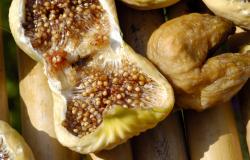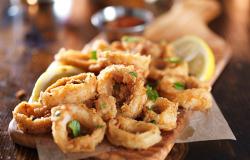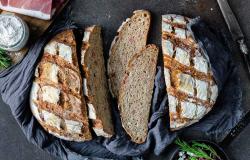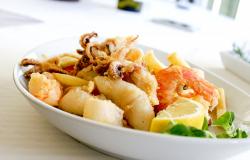Baccalà Mantecato
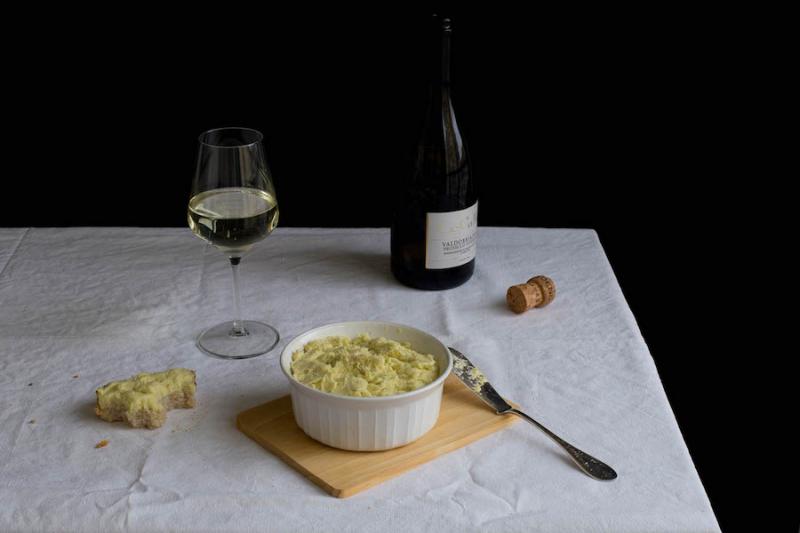
In the 1400s, some shipwrecked Venetian sailors were saved by the inhabitants of the Norwegian island of Røst. On this island not far from the Artic Circle, the local fishermen showed the sailors how they beheaded, gutted and dried seemingly infinite amounts of merluzzo or cod on large wooden racks along the shoreline. Impressed by their discovery, the sailors introduced Venice, then one of Europe's most important trading powers, to the dried cod that had once sustained the Vikings in their sea voyages across the North Atlantic. Cheap, plentiful and long-lasting, this preserved fish quickly became an important ingredient in the local cuisine and elsewhere along the Italian peninsula too.
Today, baccalà mantecato, or creamed cod, is one of the maritime city's most iconic dishes.This preparation, a fixture in the city's bàcari or bars, is made by soaking, boiling and whipping stockfish with olive oil until mousse-like. The creamed cod is then spread on slices of bread or grilled white polenta and eaten as part of a cichetto, the city's typical, almost tapas-like ritual bite to eat and drink.
Just for the record, baccalà refers to the salt-preserved variety of cod elsewhere in Italy. The Venetians, however, use the term bacalà (with one c in the Venetian dialect) to describe what other Italians call stoccafisso, stockfish or air-dried cod. If stockfish, which is usually sold whole, is not available, fillets of salt cod can be used to whip up your baccalà mantecato instead. In either case, before cooking, several days of soaking with frequent water changes are necessary for stockfish to become sufficiently tender (3-4 days) and for salt cod to taste palatable (2-3 days). If you haven't planned your menu that far in advance, don't worry. Stoccafisso and baccalà are often sold ready-soaked too.
The recipe below is for the dish in its simplest and, some would say, most traditional form. There's none of the milk or finely chopped parsley some purists frown upon, just the option of infusing the fish with bay leaves and a clove of garlic while it is being boiled. As for beating technique, the old schoolers insist on whipping the cod with a wooden spoon. Surprisingly enough, this is easier than using a whisk. The rapidly-creaming fish has a tendency to get stuck inside the wire loops when beating with one of these. As for mixers, some traditionalists argue that the final result is too homogenised. Whatever utensil you opt for, remember that the technique for creaming the bacalà is not dissimilar to making mayonnaise: a slow and steady stream of olive oil until the cod begins to absorb the oil and turns into a mousse. Oh, and if you are beating by hand, you may want some company (i.e. an extra set of arms!) in the kitchen.
Ingredients (serves 4-6 as an appetiser)
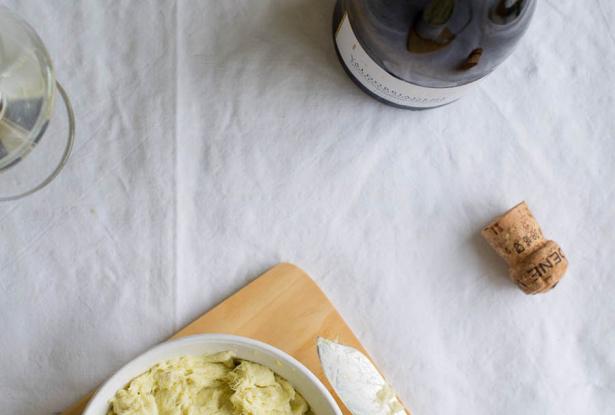
Bring stockfish or salt cod, along with bay leaves and peeled garlic clove, to boil in a large saucepan. Cook for 15 minutes or until the fish is tender. Reserve some of the cooking liquid and drain the fish. Discard the garlic and bay leaves. Remove the skin and bones from the fish. Place fish in a large mixing bowl and break the fish into small pieces. If the fish looks a bit dry, add a couple of spoonfuls of the reserved cooking liquid. With a wooden spoon or whisk, begin whipping in an energetic, circular motion to cream the fish while adding the olive oil in a slow, steady stream. As the fish begins to absorb the oil and the fish starts to take on a creamier consistency, add the oil at a slightly faster pace. Season with salt and some freshly ground white pepper. Serve as an appetiser, spread on slices of bread or grilled white polenta. For true Venetian cichetto-style, accompany with a glass of sparkling white wine from the surrounding region, such as Prosecco or Cartizze. Best consumed within two days.
